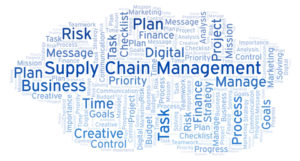 Fraud continues to run rampant as digital media and programmatic buying continue to surge in popularity, garnering ever larger shares of global advertising spend. Regulatory actions around consumer privacy and data protection are presenting a plethora of challenges for the industry and its ability to use data to customize advertising messaging and delivery.
Fraud continues to run rampant as digital media and programmatic buying continue to surge in popularity, garnering ever larger shares of global advertising spend. Regulatory actions around consumer privacy and data protection are presenting a plethora of challenges for the industry and its ability to use data to customize advertising messaging and delivery.
These are seminal issues that the advertising industry has been talking about for years. The risks and costs to advertisers and other industry players are significant. So how effectively has the industry dealt with these critical issues? If one were to generate an opinion based upon results, it would be easy to adopt the perspective that the ad industry has not dealt with these issues well at all.
Let’s start with the topic of ad fraud. While we all read the headlines, the question is; “Have we become numb to the impact of ad fraud on working dollars?” Consider that according to Juniper Research, advertisers lost $51 million per day to ad fraud in 2018. AFFISE estimates that 35.3% of all processed traffic in the first two quarters of 2019 was fraudulent. The World Federation of Advertisers (WFA) has stated that ad fraud will hit $50 billion per year by 2025.
One short year ago Facebook, in a highly publicized move eliminated 2.2 billion fake accounts, this following the elimination of 1 billion fake accounts during the 4th quarter of 2018. Interestingly, Facebook, one-half of the vaunted “duopoly” which captured over 65% of U.S. digital ad spend in 2019, itself accounts for 1 out of every 5 dollars spent on digital media in the U.S. (source: eMarketer) before and after this move.
While surely an astute media planner could readily make the case for Facebook’s appeal to advertisers, the justification for its share of the digital ad market is mystifying to the layman. According to the United Nations Population Division, there are 7.7 billion people in the world. Nielsen Online has identified 4.5 billion internet users globally. So, if Facebook eliminated more than 3.2 billion accounts, albeit fake over the course of four months, how many accounts could it possibly have had? What level of due diligence were agencies and advertisers undertaking to verify the base? Or, could it be that the industry simply has no valid means of verifying or measuring key digital audience factors?
The term “Big Data” was coined in the early part of the 1990s, referring to the vast amounts of data being gathered as the internet expanded. The data allowed marketers to conduct computational analysis that could reveal patterns, trends and associations related to human behavior. As the use of algorithms, artificial intelligence and marketing automation technology has come into vogue, the ability to more finitely target an advertiser’s message to specific niches, based upon this data, held great promise. This led to the meteoric growth of AdTech and MarTech solution providers vying for a share of advertiser dollars.
Then, in 2016, the European Union introduced the General Data Protection Regulation (GDPR), ushering in laws designed to protect consumer data and privacy. GDPR has since served as a model for regulatory action in countries around the world and within the United States, with the introduction of the California Consumer Privacy Act (CCPA). The impact on the ad industry has been significant as marketers, technology providers and publishers have struggled to comply with these varying laws. In turn, this led one important player, Google to announce the elimination of third-party cookies from its Chrome browser to avoid some of the risks associated with privacy regulation. The impact on marketers’ audience targeting and attribution modeling efforts will be swift and significant. Some have suggested that this could even signal the end of personalized marketing.
From this author’s perspective, the industry has not effectively dealt with these challenges. There are simply too many disparate interests at stake, which have served as very real impediments to progress in tackling these issues.
Let’s face it, in spite of the impact of fraud, fake devices, fake locations, fake impressions, fake consent strings, ineffectual brand safety and fraud detection services and a lack of uniform industry measurement and verification standards, advertisers continue to spend on media types, intermediaries and technologies that are simply not generating a return worthy of their investment. So where is the impetus for change?
Rather than working on real solutions to address real problems, the industry adopts labels or coins phrases that cover its retreat. Examples such as “Human Marketing” and the need to treat our target audiences as “people” as a solution to the inability to deal with the challenges presented by big data, technology and regulation to customize and personalize at scale. Or the use of the term “Contextual Marketing” in which ad delivery is based upon scanning texts of web pages and serving up a marketer’s ads based upon relevant keywords, rather than behavioral data. Or the nuanced notion of “Brand Suitability” versus “Brand Safety” to mask the inability to adhere to advertiser blacklists and or to ensure proper editorial adjacencies. Really? How is this all of a sudden more appealing than the noble quest, funded by advertisers, that gave birth to the “MarTech 5000” list.
From the outside looking in, it appears as though the industry is content with taking the path of least resistance, opting for a safer, more self-centered approach to issue resolution, rather than focus on doing what is best for the entire industry and ignoring advertisers’ desires to increase the effectiveness of their marketing spend.
To paraphrase American author, Richard Yates from his novel about 1950’s suburban life entitled Revolutionary Road; “It’s a disease. Nobody thinks or feels or cares any more; nobody gets excited or believes in anything except their own comfortable little mediocrity.”
 The “Procurement Phenomenon” at the dawn of the new millennium has morphed squarely into the Procurement Era for Marketing and Communications Services. Agency executives can no longer ignore this new marketplace reality and must now embrace, educate, and in some instances, emulate this very influential Client stakeholder.
The “Procurement Phenomenon” at the dawn of the new millennium has morphed squarely into the Procurement Era for Marketing and Communications Services. Agency executives can no longer ignore this new marketplace reality and must now embrace, educate, and in some instances, emulate this very influential Client stakeholder.







